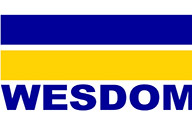![]() Wesdome {TSX.V: WDO}
Wesdome {TSX.V: WDO}
Released its third-quarter financial results.
WDO Earned a mine profit of $26.8 million, a 93% increase over Q3 2018 (Q3 2018 – $13.9 million).
.
.
.

.
.
.
Wesdome earns $12.44-million in Q3 2019
2019-11-06 15:50 ET – News Release
Mr. Duncan Middlemiss reports
.
WESDOME ANNOUNCES 2019 THIRD QUARTER FINANCIAL RESULTS
.
Wesdome Gold Mines Ltd. has released its third-quarter financial results. All figures are stated in Canadian dollars unless otherwise noted.
.
Mr. Duncan Middlemiss, President and CEO commented, “In Q3, cash costs of $815 (US$618) per ounce were relatively flat over the previous quarter ($837 of US$626 per ounce). All-in sustaining costs of $1,344 (US$1,018) per ounce were higher than those incurred in Q2 ($1,220 or US$912 per ounce) due to a $4 million investment, or $168 (US$128) per ounce into the tailings management facility. This project will provide for an additional 4 years capacity at current mill feed. Despite our higher sustaining, project, and exploration expenditures during the quarter, the company was able to generate $9.2 million in free cash flow, thereby resulting in a cash position at the end of the quarter of $38.6 million.”
“Due to continued superb performance of the 303 Lens, we have increased 2019 guidance from 72,000 – 80,000 ounces to 88,000 to 93,000 ounces, with 70,356 ounces produced to the third quarter. Recent exploration results have extended the 303 Lens 300 metres down plunge where it remains open. Year to date cost of $838 (US$630) per ounce cash costs and $1,290 ($US970 per ounce AISC are both at the low end of cost guidance of $830 – $900 (US$640 – $US690) an ounce on cash costs per ounce and $1,280 – $1,350 (US$985 – 1,040) an ounce on AISC. We expect ounce production in the fourth quarter to be in the 19,000 – 22,000 range as we plan to process some of the Mishi stockpile.”
“At Kiena, we released an updated Resource Estimate in September which substantially increased the Kiena Deep A Zone grade, and indicated and inferred resource ounces. The Preliminary Economic Assessment (PEA) is well underway and we expect to complete the study in Q1 2020. We are half way completed on the 790 metre level drift to further test the up plunge of the A Zone. Once completed, we will have one drill stationed there and expect to release results in the first half of 2020.”
,
Key operating and financial highlights of the Q3 2019 results include:
- Gold production of 28,910 ounces from the Eagle River Complex, a 46% increase over the same period in the previous year (Q3 2018: 19,795 ounces): Eagle River Underground 39,453 tonnes at a head grade of 23.4 grams per tonne (“g/t Au”) for 28,894 ounces produced, 49% increase over the previous year (Q3 2018: 19,437 ounces). Mishi Open Pit 204 tonnes at a head grade of 2.8 g/t Au for 15 ounces produced (Q3 2018: 358 ounces).
- Revenue of $45.9 million, a 59% increase over the previous year (Q3 2018: $28.9 million).
- Ounces sold 23,450 at an average sales price of $1,957/oz (Q3 2018: 18,401 ounces at an average price of $1,571/oz).
- Cash costs1 of $815/oz or US$618/oz, neutral over the same period in 2018 (Q3 2018: $815/oz or US$624/oz).
- All-in sustaining costs (“AISC”) 1 of $1,344/oz or US$1,018/oz, a 16% increase over the same period in 2018 (Q3 2018: $1,160/oz or US$888/oz), due to the investment in the tailings management facility at the Eagle River Mine in 2019.
- Earned mine profit1 of $26.8 million, a 93% increase over Q3 2018 (Q3 2018 – $13.9 million).
- Operating cash flow of $27.3 million or $0.20 per share1 as compared to $12.8 million or $0.10 per share for the same period in 2018. Free cash flow of $9.2 million, net of an investment of $5.9 million in Kiena, or $0.07 per share1 (Q3 2018: free cash flow of $2.1 million or $0.02 per share).
- Net income and Net income (adjusted)1 of $12.4 million or $0.09 per share (Q3 2018: $3.6 million or $0.03 per share).
- Cash position increased to $38.6 million compared to $27.4 million in the previous quarter.
.
Refer to the Company’s 2019 Second Quarter Management Discussion and Analysis, section entitled “Non-IFRS Performance Measures” for the reconciliation of these non-IFRS measurements to the financial statements.
.
Q3 2019 HIGHLIGHTS AND ACHIEVEMENTS
.
Operations and Financial Highlights with Comparison to Q3 2018
.
Gold production of 28,910 ounces from the Eagle River Complex.
Gold production increased by 46% (Q3 2018 – 19,795 ounces). YTD gold production of 70,356 ounces, an increase of 29% when compared to YTD 2018 production of 54,371 ounces.
Cash costs of $815 (US$618) per ounce of gold sold 1.
Cash costs in Canadian dollars remained consistent (Q3 2018 – $815 (US$624) per ounce).
AISC 1 of $1,344 (US$1,018) per ounce.
AISC increased by 16% (Q3 2018 – $1,160 (US$888) per ounce) due to $4.0 million or $168 (US$128) per ounce spent on the tailings management area (“TMA”) at Eagle River.
Earned mine profit 1 of $26.8 million.
An increase of $12.9 million or 93% when compared to $13.9 million generated in Q3 2018.
Operating cash flow of $27.3 million or $0.20 per share 1.
Operating cash flow at a strong level at $27.3 million for the quarter as a result of higher production and the increase in cash from working capital changes (Q3 2018 – $12.8 million or $0.10 per share).
Free cash flow of $9.2 million or $0.07 per share1.
Eagle River generated free cash flow of $9.2 million for the quarter, net of an investment of $5.9 million in Kiena and $4.0 million spent on the TMA at Eagle River in the quarter. Free cash flow in Q3 2018 was $2.1 million or $0.02 per share.
Net income attributable to shareholders of $12.4 million or $0.09 per share.
Adjusted net income1 of $12.4 million or $0.09 per shareA delivery of strong net earnings and Adjusted net earnings in the quarter as a result of strong production performance and increasing gold prices. Net income and Adjusted net income1 for Q3 2018 was $3.6 million or $0.03 per share, respectively.
Refer to the section entitled “Non-IFRS Performance Measures” for the reconciliation of these non-IFRS measurements to the Financial Statements











